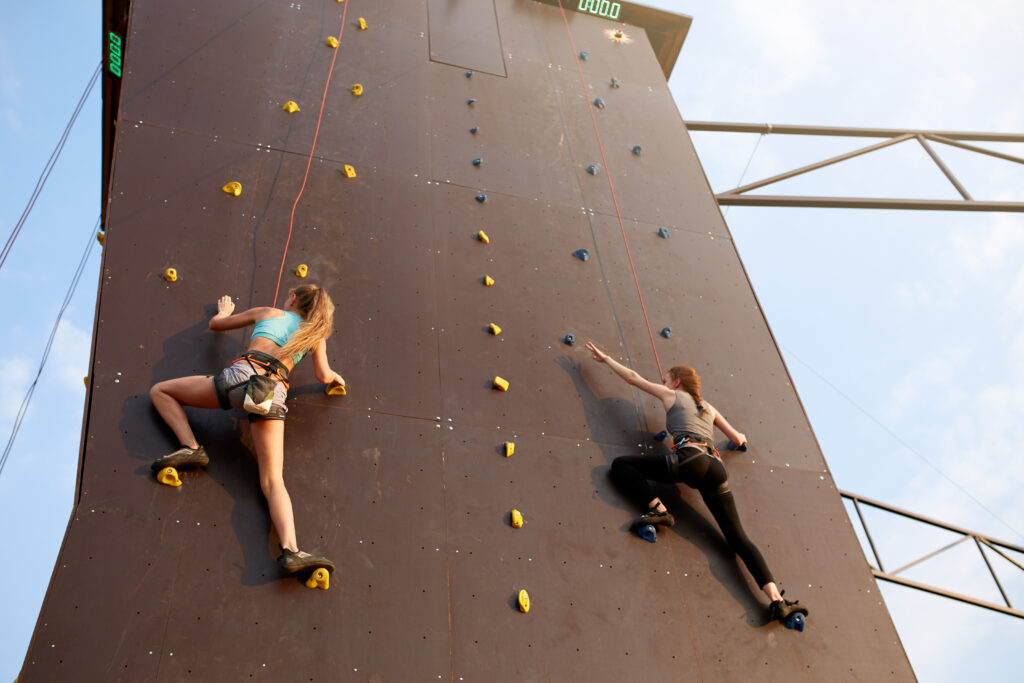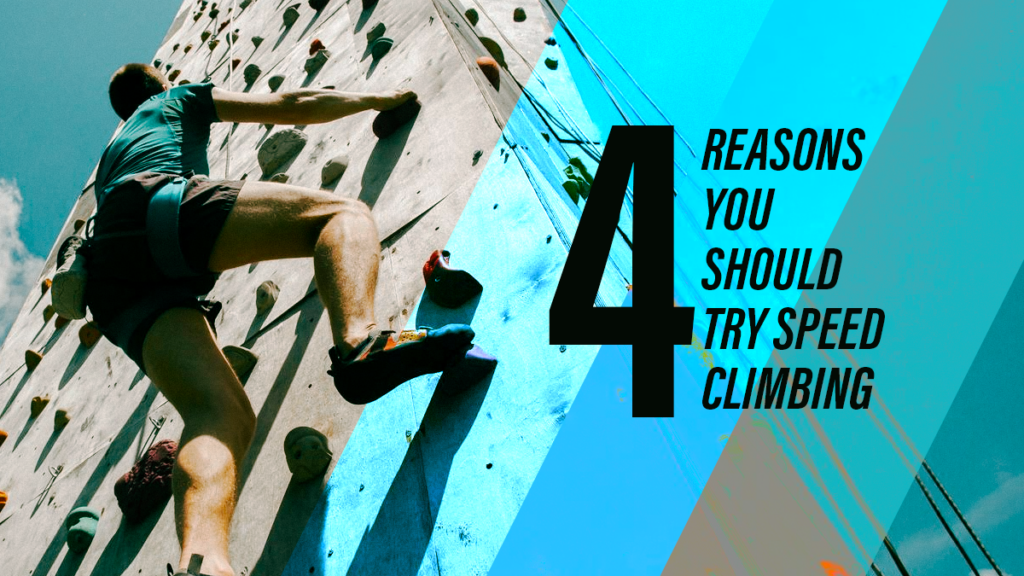Speed climbing can be intimidating, but believe it or not, it can be an excellent tool for any climber. A 15-meter tall wall, at precisely 5 degrees overhanging, with blobby red holds placed strategically to the top. Everywhere in the world, the speed climbing wall is the same. Every climber should try speed climbing because it is an overlooked part of the sport. Here are a few if you want a productive reason to try speed climbing.
Reasons to Try Speed Climbing
Power
Power is the most critical skill for a climber to speed climb fast. You use power when you dyno or make a bouldering move quickly with momentum. When it comes to speed climbing fast, you are utilizing power every single move, which is a lot of sustained power. Trying out speed climbing and seeing how quickly you go is a great way to train power because the power you’re using while speed climbing doesn’t only come from your upper body but from your lower body too. If you train power by practicing speed climbing, you challenge your entire body’s ability to generate power. On top of being beneficial for training power, your ability to speed climb with relative ease or lack thereof, can be a helpful indicator to determine if power is a weakness or a strength. Power is a strength if jumping from hold to hold is relatively easy. Power is likely a weakness if you make one or two dynamic movements before getting out to breathe.
Coordination
Another essential quality of a speed climber is coordination. You’re probably familiar with the coordination comp-style boulders in your local gym. If you’re unfamiliar, coordination boulders involve a dynamic movement where multiple actions must be performed in one fluid motion. For example, let’s say there is a lateral dyno that is nearly impossible to stick without kicking your feet out to a different hold as soon as you catch the dyno hold. The combination of catching the dyno hold and immediately kicking the feet out to another hold is a coordination movement because it’s two different movements performed back-to-back, making it appear like a single movement. Whether you enjoy these types of boulders or not, speed climbing can help you understand coordination since every move requires a lot of coordination. Once you are speed-climbing relatively quickly, it takes a lot of practice and effort to ensure you land your feet in the proper spot while simultaneously placing your hands on the following holds.

Confidence
Speed climbing can help with confidence. You can stick to that next move if you find yourself falling on hard boulders or routes due to doubt. Speed climbing will be beneficial. Believing that you will stick to that next move can increase your chances of sticking to that next move, and having that belief in yourself comes from your confidence level. The best way to practice improving your confidence is continually sticking to dynamic moves because dynamic moves can be scarier and more complex. While speed climbing, you are constantly climbing dynamically, move after move. The more dynamically you climb while speed climbing, your confidence will skyrocket.
A Fun Challenge!
Lastly, speed climbing can be fun. It can be a nice change from your regular climbing routine and bring a different type of friendly competition into the sport between you and yourself or you and your climbing buddies. Trying out speed climbing will also give you an excellent perspective for when you watch the Olympics in 2024. As those athletes climb sub 5 seconds, even sub 4 seconds, you will significantly appreciate the feat if you have tried it yourself! Speed climbing is no joke, so if you are up for a challenge, trying it out is a great way to challenge your climbing ability uniquely.

